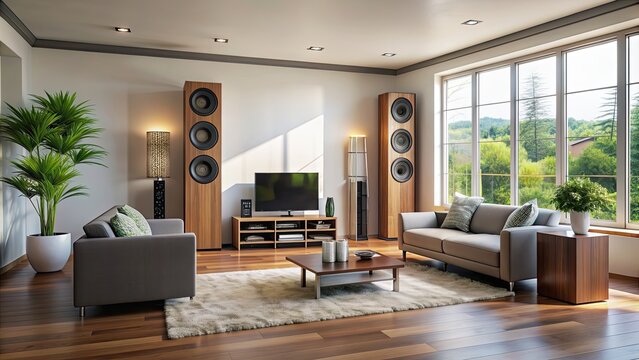When it comes to building a high-quality stereo system, the speakers are the most important component. No matter how powerful the amplifier or how advanced the source device, the speakers are what deliver the sound to your ears. Choosing the right speakers for your stereo system can be the difference between an ordinary listening experience and an immersive, high-fidelity soundscape. In this article, we will explore the different types of home audio systems, key features to consider, and how to choose the best ones for your needs.
1. Understanding Stereo System Speakers
Stereo system speakers are designed to reproduce sound as accurately as possible, creating a rich, full-range audio experience. They work by converting electrical signals from your stereo amplifier into audible sound using various components like drivers, tweeters, and woofers. Stereo systems typically feature two main speakers (left and right), but some setups may include additional components, such as subwoofers for deeper bass or center and surround speakers for more advanced home theater systems.
There are several types of speakers that can be used in stereo systems, each with its own strengths and characteristics. Understanding these types will help you make a more informed decision when selecting speakers for your setup.
2. Types of Stereo System Speakers
Bookshelf Speakers
Bookshelf speakers are compact, versatile speakers designed to sit on a shelf, table, or stand. Despite their small size, they can offer impressive sound quality. They typically have a full-range driver or a two-way system (woofer and tweeter) to cover a wide range of frequencies. Bookshelf speakers are ideal for smaller rooms or for those who don’t want to compromise on sound quality but need a more space-saving option.
Pros:
- Compact and space-saving
- Good for small to medium-sized rooms
- Easy to set up
Cons:
- Less bass output than floor-standing speakers
- Limited to a specific frequency range
Floor-Standing (Tower) Speakers
Floor-standing speakers, also known as tower speakers, are larger and more powerful than bookshelf models. These speakers have multiple drivers (woofers, midrange, and tweeters) stacked vertically to deliver fuller sound and more bass. Floor-standing speakers are ideal for larger rooms and are often used in audiophile setups or home theaters.
Pros:
- Deep, full bass and wide frequency range
- High output power for larger rooms
- Better sound stage and imaging
Cons:
- Larger and more expensive
- Requires more space to position properly
Satellite Speakers
Satellite speakers are small speakers that often pair with a subwoofer to create a full-range audio system. These are typically used in home theater systems to provide surround sound but can also be used in stereo systems when paired with a subwoofer to enhance bass response.
Pros:
- Compact and easy to place
- Ideal for creating surround sound setups
- Works well with a subwoofer
Cons:
- Limited low-end frequency range
- Require additional subwoofer for full-range sound
Subwoofers
Subwoofers are specialized speakers designed to reproduce low frequencies (bass). They are typically used in conjunction with other speakers (such as bookshelf or floor-standing speakers) to enhance the overall sound experience by providing deep, powerful bass that regular speakers cannot produce effectively.
